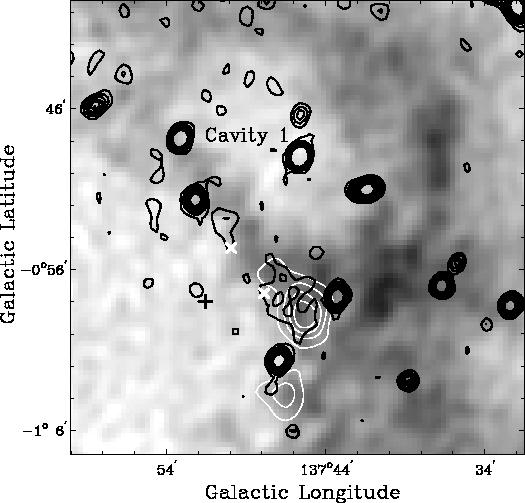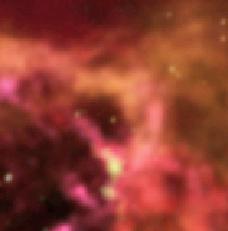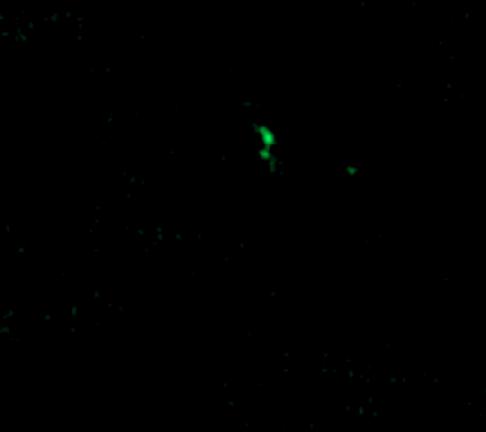




The black and white image on the left is Figure 5 from
the paper by Stil & Irwin (2001).
The white contours show the outline
of the molecular cloud (greenish in the image avove). The black
contours outline radio continuum emission at a wavelength of 21 cm
from ionized hydrogen. The ionized hydrogen (HII region) was
discovered by De
Geus et al. (1993), and has the same velocity as the molecular
cloud. The grayscales display the atomic hydrogen with the same
velocity as the CO cloud and the HII region. All of the atomic
hydrogen is part of he shell GSH 138-01-94. The white crosses indicate
the brightest areas of the optical emission of the HII region. The
black + indicates the star that is probably responsible for the
ionization of the HII region (see De Geus et al. 1993)
The colour image shows a slightly larger area than the black and white image. Only the upper right
quadrant of the shell is displayed in these images.
Back